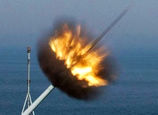
1907
China and the British Empire signed an anti-opium treaty, which set China’s annual import quota of opium at 51,000 containers and specified that the quota should reduce by 5,100 containers every year starting 1908. However, the British government also said that the treaty was in a pilot phase in the first three years, and it would agree to reduce the quota if the Chinese government did well in eliminating opium, otherwise it would repeal the treaty unilaterally. As China made remarkable achievements in eliminating opium in the pilot phase by May 1911, the British Empire had to abide by the treaty.
1909
The United States convened a conference of the International Opium Commission in Shanghai in February 1909. China, France, the United States, Germany, Italy, the Netherlands, Portugal, Russia, Japan, and Persia all sent representatives to the conference. The British Empire, the main exporter of opium to China, also attended the conference. The convention passed at the conference recognized China’s remarkable achievements in drug control, and demanded all contracting powers to forbid opium from being transported to countries where the drug was illegal. The convention also forbade the sale of morphine, and asked major powers’ concessions in China to support the Chinese government’s anti-opium drive. As the first international anti-opium convention, it placed the British Empire under heavy pressure, and contributed greatly to China’s anti-opium drive.
1916
Warlords held sway in China, and the central government’s opium ban existed in name only. Growing poppies as well as manufacturing and taking opium became a common practice nationwide, leading to another opium calamity.
1917
The 10-year anti-opium program was basically completed. The Chinese and British governments announced after investigations that China had eliminated poppy production nationwide, and Britain and India would stop exporting opium to China, marking a nominal end to the opium trade that plagued China for a long time.
1927
The Nanjing national government achieved little success in opium elimination when it ruled the country.
1949
Poppies grew in 1 million hectares of Chinese land, and the number of drug addicts reached 20 million, equivalent to one addict in every 25 Chinese people. In addition, more than 300,000 people were engaged in the drug trafficking industry.




















![]()
